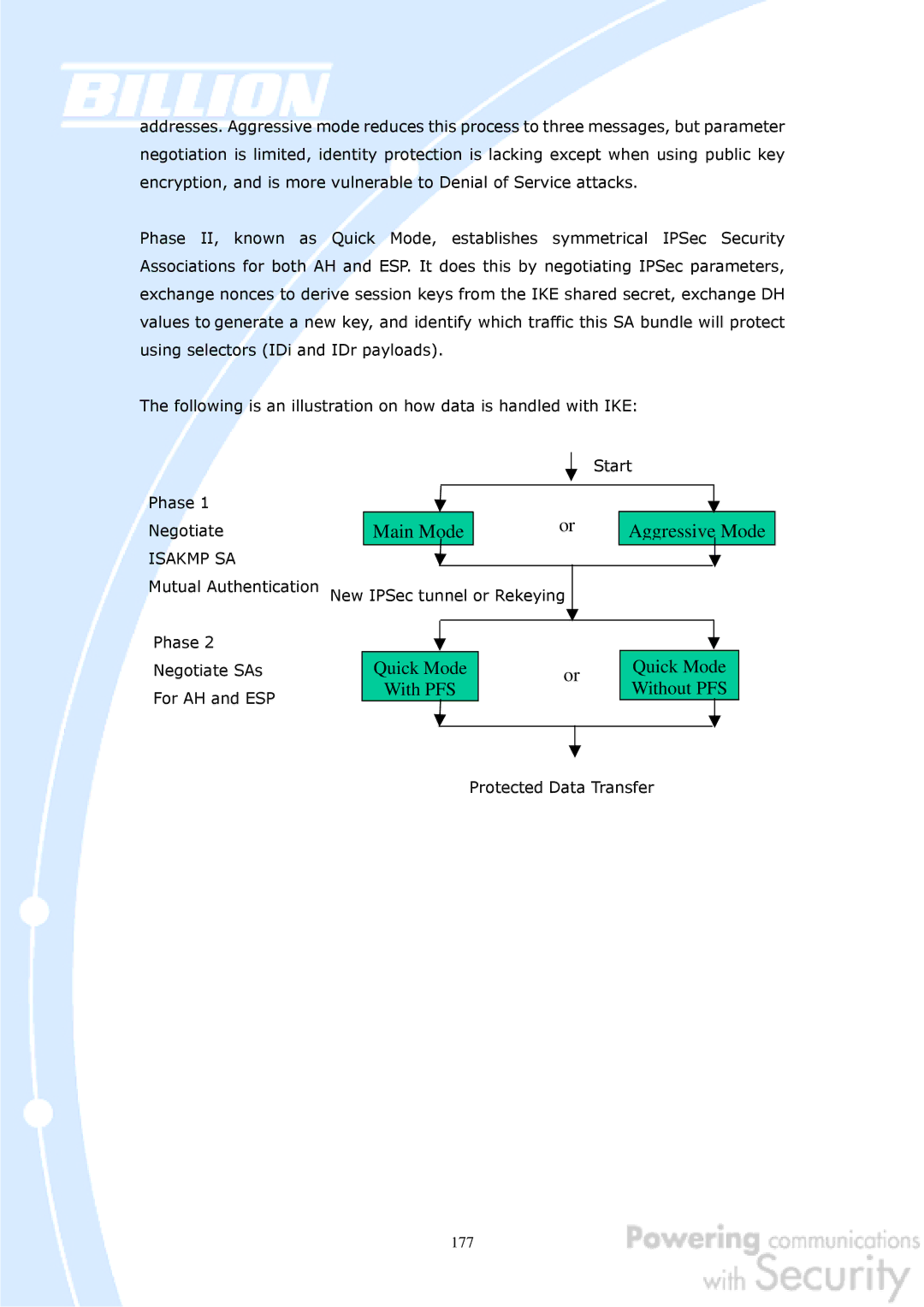
addresses. Aggressive mode reduces this process to three messages, but parameter negotiation is limited, identity protection is lacking except when using public key encryption, and is more vulnerable to Denial of Service attacks.
Phase II, known as Quick Mode, establishes symmetrical IPSec Security Associations for both AH and ESP. It does this by negotiating IPSec parameters, exchange nonces to derive session keys from the IKE shared secret, exchange DH values to generate a new key, and identify which traffic this SA bundle will protect using selectors (IDi and IDr payloads).
The following is an illustration on how data is handled with IKE:
Phase 1 |
|
|
|
|
| Start | ||
|
|
|
|
| ||||
|
|
|
|
|
|
|
| |
|
|
| or |
|
|
| ||
|
|
|
|
|
| |||
Negotiate |
| Main Mode |
| Aggressive Mode | ||||
ISAKMP SA |
|
|
|
|
|
|
|
|
|
|
|
|
|
|
|
| |
Mutual Authentication | New IPSec tunnel or Rekeying |
|
|
|
| |||
|
|
|
|
|
|
|
|
|
Phase 2
Negotiate SAs
For AH and ESP
Quick Mode
With PFS
or
Quick Mode Without PFS
Protected Data Transfer
177
